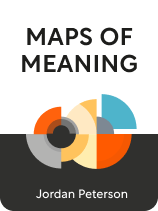

This article is an excerpt from the Shortform book guide to "Maps of Meaning" by Jordan Peterson. Shortform has the world's best summaries and analyses of books you should be reading.
Like this article? Sign up for a free trial here.
What’s the difference between science and mythology when it comes to how we understand the world and ourselves? What are their distinct goals?
Jordan Peterson contends that science plays a role in helping us understand objective reality but that we need myths to inform our subjective judgments. Myths provide meaning that science cannot.
Read more to understand Peterson’s argument.
Science and Mythology
Peterson establishes that science and mythology aren’t meant to achieve the same goals. The human experience is both objective and subjective—science is essential for understanding objective reality, but myth determines the subjective value of the world around us. We’ll distinguish between what falls in the domain of science and what comes under the subjective realm as well as what it means to view the world through a mythical lens.
Science is humanity’s best tool for understanding the physical properties of the world. It can tell us an object’s shape and width, what it’s made of, and how heavy it is. However, Peterson argues that pure objectivity is impossible. The human mind always assigns a subjective meaning to what we observe.
For example, from a scientific point of view, we might observe that an object is a straight piece of wood, five feet long and an inch in diameter, tapered to a sharp point on one end. We can predict how fast it will fall if we drop it or how far it will travel if thrown. Subjectively, our brain says this object is a spear. It can be used for hunting so we can feed our family, and it can also defend our tribe from attack. In the hands of an enemy, the spear is an instrument of terror.
(Shortform note: The difference between objective and subjective reality has long been the purview of the branch of philosophy known as “metaphysics.” However, understanding the distinction is also useful in the realm of oratory and persuasion. In Win Bigly, Scott Adams argues that most of us think our worldview is objective, when in actuality our beliefs are shaped by subjective emotions, such as fears, aspirations, and feelings of cultural identity. A master communicator can use the power of subjectivity to influence others’ perceptions of reality in much the same way that myths convey deeper ideas underneath their surface.)
Peterson claims that it’s impossible for the human mind to look at an object or an event solely in terms of its physical properties. We’ll always see the spear as a tool or a threat, and it isn’t science that assigns those values. They come from a mental story that gives the spear its meaning. When abstracted into the larger group of narratives we use to interpret the world at large, the stories that give meaning to everything around us constitute what we call “myth.”
(Shortform note: Many definitions of “myth” characterize it as a false belief or a pre-scientific attempt to explain the natural world. These definitions primarily serve to disassociate myth from the realms of science and religion. However, philosophers, theologians, and writers recognize the enduring value of the patterns embedded in mythology. The Roman historian Sallustius once said, “Myths are things that never happened but always are.” Modern-day fantasist Neil Gaiman insists that myths are still relevant, serving as the basis from which other stories sprout.)
Peterson writes that from the mythic point of view, our mind classifies everything in terms of its meaning: how it prompts us to act. Fibers of plant matter woven into threads become nets we can use to trap fish for us to eat. Other plant fibers woven into threads become clothes, something to protect us from the weather. The physical properties of any given object are secondary to the function it serves or how it makes us behave. The sun, for example, tells us when to wake up, it brings life and warmth, but it can also burn. Therefore, from the mythic point of view, the sun is a god that rules human behavior far more than any human leader ever could.
(Shortform note: The sun god is one of the most common figures throughout world mythology, from the Egyptians’ Ra and the Greeks’ Helios to the Japanese Amaterasu and the Hindu deity Surya. The solar cycle was an object of worship at ancient sites such as Stonehenge in England, Angkor Wat in Cambodia, and Chankillo in Peru. In Yahweh and the Sun, Old Testament professor J. Glen Taylor examines archaeological and biblical evidence that even the early Israelites may have practiced a form of sun worship in their approach to God.)

———End of Preview———
Like what you just read? Read the rest of the world's best book summary and analysis of Jordan Peterson's "Maps of Meaning" at Shortform.
Here's what you'll find in our full Maps of Meaning summary:
- Why myths are vital to how humans confront and make sense of a chaotic world
- How to apply the lessons of myth to live a more well-rounded life
- How the findings of neuroscience are echoed in the structure of our most ancient tales






